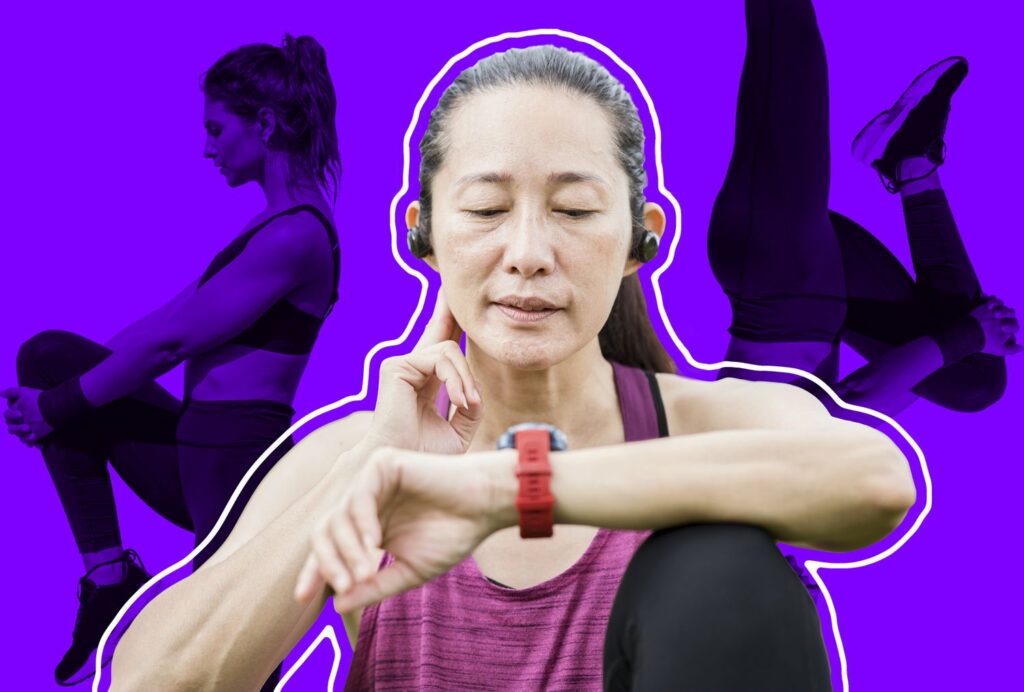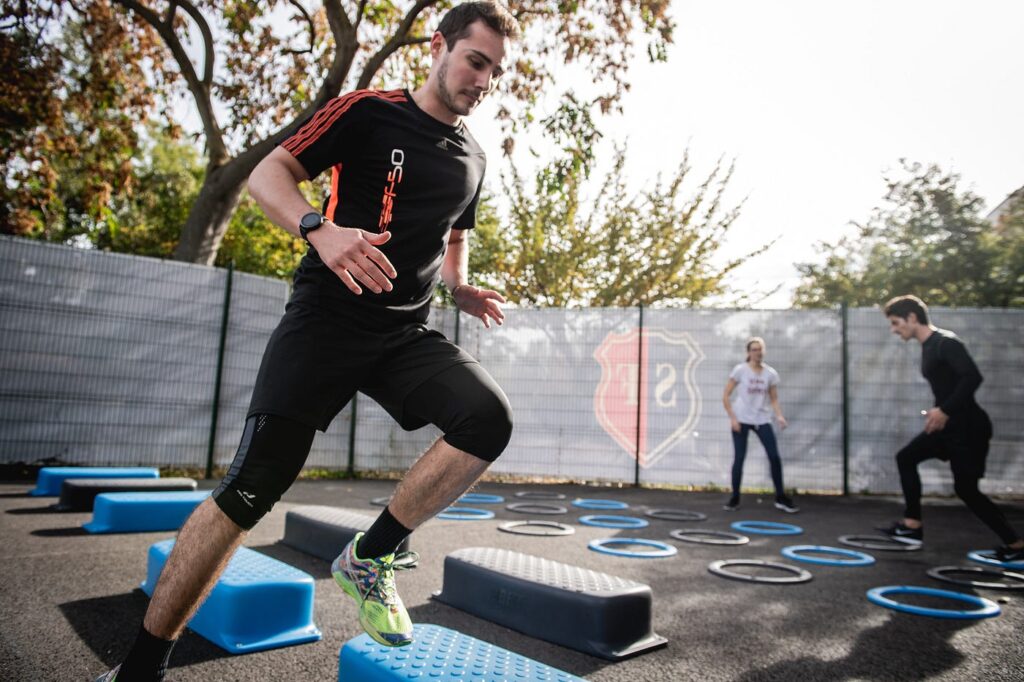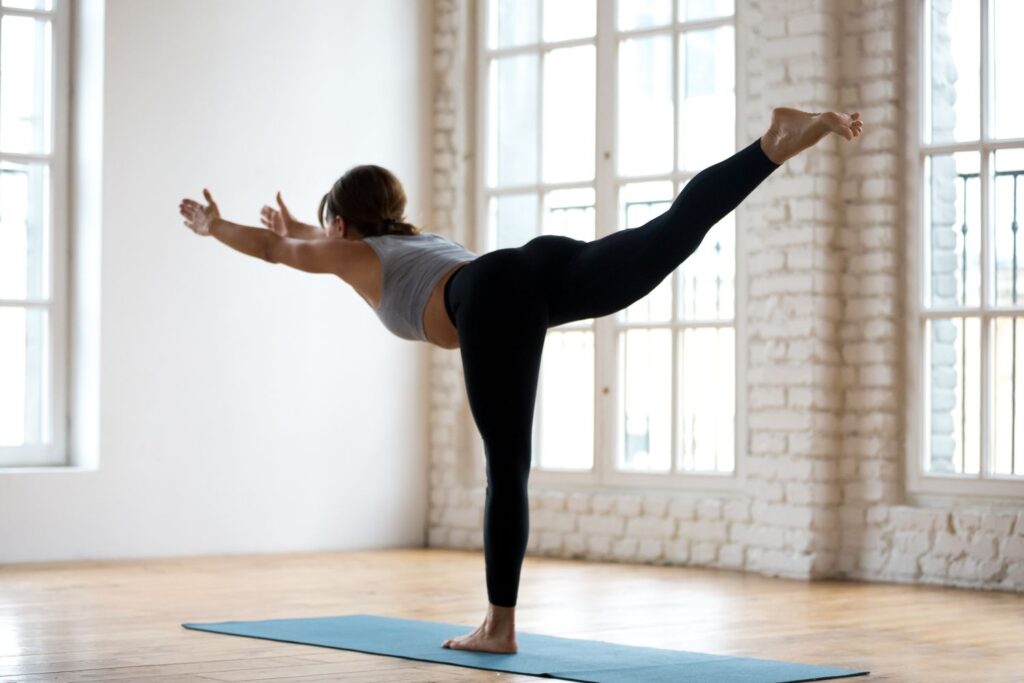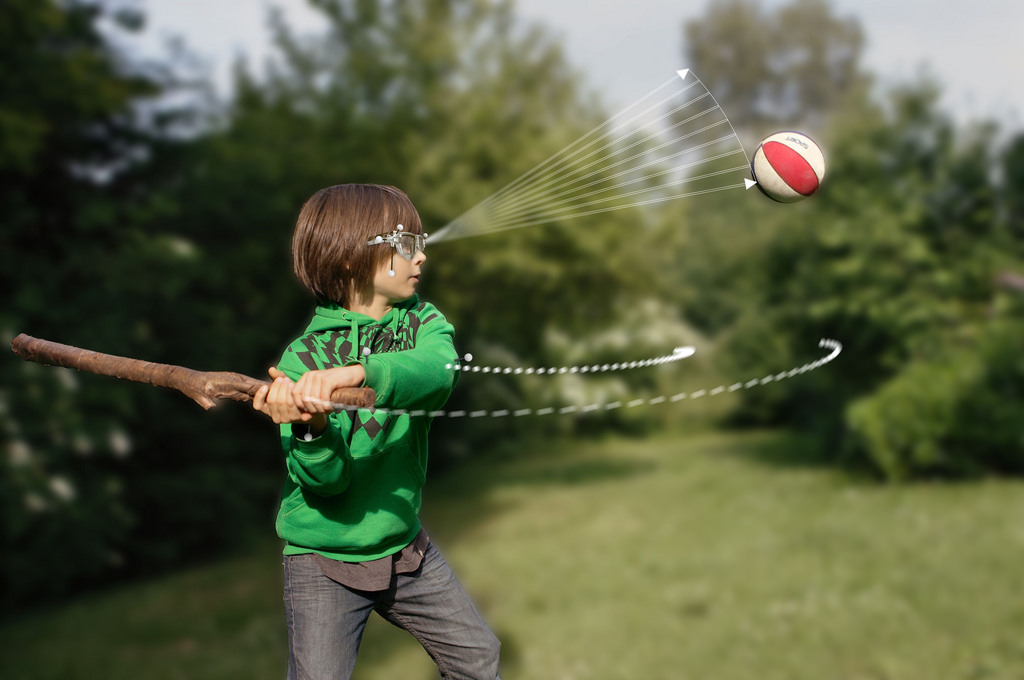Which of the Following is Not a Component of Skill-Related Fitness?
Introduction
Fitness is a multifaceted concept that encompasses various elements contributing to an individual’s overall physical health and performance. While most people are familiar with health-related fitness components, skill-related fitness components are equally crucial, particularly for athletes and individuals involved in sports or physical activities. Understanding these components can significantly enhance performance and efficiency in various physical endeavors.

In this comprehensive blog post, we will delve into the intricacies of skill-related fitness, explore its six components, and identify which among them is not considered a part of skill-related fitness. By the end of this post, you will have a thorough understanding of skill-related fitness and its importance in both sports and everyday activities.
The Six Components of Skill-Related Fitness
Skill-related fitness refers to the attributes that contribute to the performance of physical tasks and activities. These components are particularly vital for athletes and individuals who engage in sports or other physical pursuits. The six components of skill-related fitness are:
- Agility
- Balance
- Coordination
- Power
- Reaction Time
- Speed
1. Agility
Agility is the ability to move quickly and change direction with precision. It is a crucial component for activities that require rapid movement and directional changes, such as basketball, soccer, and tennis. Agility involves a combination of speed, balance, and coordination, allowing an individual to navigate obstacles and opponents effectively.

Agility drills, such as ladder drills, cone drills, and shuttle runs, are commonly used to enhance this component. These exercises improve an individual’s ability to accelerate, decelerate, and change direction quickly, leading to better performance in sports and other physical activities.
Benefits of Agility
Improving agility has several benefits beyond enhancing performance in specific sports. It can help reduce the risk of injuries by improving the body’s ability to react quickly to changes in the environment. Agility training also enhances neuromuscular coordination, which is essential for overall motor skills and everyday tasks. Additionally, it can improve cognitive function by requiring the brain to process information quickly and make rapid decisions.
Agility Training Exercises
Ladder Drills: Ladder drills are an excellent way to improve foot speed and coordination. These drills involve moving quickly through a ladder laid on the ground, using various step patterns.
Cone Drills: Cone drills help enhance quick direction changes and acceleration. Set up cones in different patterns and perform drills like the T-drill or the pro agility shuttle.
Shuttle Runs: Shuttle runs involve running back and forth between two points, emphasizing quick starts and stops.
2. Balance
Balance is the ability to maintain control of the body’s position, whether stationary or while moving. It is essential for activities that require stability, such as gymnastics, surfing, and skiing. Balance training helps improve proprioception, which is the body’s ability to sense its position in space.

Exercises that enhance balance include yoga, tai chi, and balance board exercises. These activities challenge the body’s stability and help develop the muscles and neural pathways necessary for maintaining balance in various situations.
Benefits of Balance
Enhancing balance can lead to improved posture and alignment, reducing the risk of chronic pain and injuries. It also helps in maintaining functional movement patterns, which are essential for daily activities and overall mobility. Good balance is particularly crucial for older adults, as it can prevent falls and improve overall quality of life.
Balance Training Exercises
Yoga: Yoga involves a series of poses and movements that challenge balance and flexibility. It also promotes relaxation and mental focus.
Tai Chi: Tai chi is a form of martial arts that emphasizes slow, controlled movements and deep breathing. It improves balance, coordination, and mental clarity.
Balance Board Exercises: Using a balance board can help improve stability and coordination. Perform exercises like standing on one leg or doing squats on the board.
3. Coordination
Coordination is the ability to use different parts of the body together smoothly and efficiently. It is crucial for sports that require precise movements, such as baseball, golf, and martial arts. Good coordination allows an individual to perform complex tasks with ease and accuracy.

Practicing skills drills and hand-eye coordination exercises can enhance this ability. Activities like playing catch, juggling, and dribbling a basketball are excellent ways to improve coordination. These exercises help synchronize the movements of different body parts, leading to better overall performance.
Benefits of Coordination
Improving coordination can enhance overall motor skills, making everyday tasks easier and more efficient. It can also improve reaction times and reduce the risk of injuries by promoting proper movement patterns. Additionally, good coordination is essential for developing other skill-related fitness components, such as agility and balance.
Coordination Training Exercises
Playing Catch: Throwing and catching a ball helps improve hand-eye coordination and reaction time.
Juggling: Juggling challenges coordination and concentration. Start with three balls and gradually increase the difficulty as you improve.
Dribbling a Basketball: Dribbling a basketball requires coordination between the hands and eyes. Practice dribbling with both hands to enhance overall coordination.
4. Power
Power is the ability to exert maximum force in a short period of time. It combines both strength and speed and is essential for explosive movements like jumping, sprinting, and lifting. Power is a critical component for athletes who need to perform quick, forceful actions.
Plyometric exercises, such as jump squats, box jumps, and medicine ball throws, are effective for developing power. These exercises focus on the rapid contraction and relaxation of muscles, enhancing the body’s ability to produce force quickly.

Benefits of Power
Improving power can enhance athletic performance in various sports, such as track and field, football, and basketball. It also promotes overall strength and muscle development, which are essential for maintaining functional movement patterns and reducing the risk of injuries. Additionally, power training can improve cardiovascular fitness and metabolic rate, leading to better overall health and fitness.
Power Training Exercises
Jump Squats: Jump squats involve performing a squat and then explosively jumping upwards. This exercise enhances lower body power and strength.
Box Jumps: Box jumps involve jumping onto and off a sturdy box or platform. This exercise improves explosive power and coordination.
Medicine Ball Throws: Medicine ball throws involve throwing a weighted ball with maximum force. This exercise enhances upper body power and coordination.
5. Reaction Time
Reaction time is the speed at which an individual responds to a stimulus. This component is crucial in sports where quick decision-making is essential, such as in boxing, fencing, and racquet sports. A fast reaction time allows an individual to respond promptly to opponents, obstacles, or changes in the environment.

Reaction time can be improved with practice drills that mimic real-game scenarios. For example, reaction ball drills, where a ball is thrown unpredictably, can help enhance an individual’s responsiveness. These drills train the brain and muscles to react quickly to external stimuli.
Benefits of Reaction Time
Improving reaction time can enhance performance in various sports and physical activities, allowing for quicker and more efficient responses to external stimuli. It can also improve cognitive function and decision-making skills, leading to better overall performance in both athletic and everyday tasks. Additionally, a fast reaction time can reduce the risk of injuries by enabling quicker responses to potentially hazardous situations.
Reaction Time Training Exercises
Reaction Ball Drills: A reaction ball is an unevenly shaped ball that bounces unpredictably. Practicing with a reaction ball can improve hand-eye coordination and reaction time.
Partner Drills: Partner drills involve reacting to signals or movements from a partner. These drills can mimic real-game scenarios and enhance reaction time.
Video Game Training: Certain video games require quick reflexes and decision-making skills. Playing these games can improve reaction time and cognitive function.
6. Speed
Speed is the ability to move quickly across the ground or move limbs rapidly to grab or throw. It is fundamental in track and field, swimming, and other racing sports. Speed is a key component for athletes who need to cover distances swiftly or perform rapid movements.

Sprint training and interval workouts are effective methods to increase speed. These exercises involve short bursts of high-intensity activity followed by periods of rest or low-intensity activity. This type of training helps improve the body’s ability to generate and sustain high speeds.
Benefits of Speed
Improving speed can enhance performance in various sports and physical activities that require quick movements and rapid acceleration. It can also improve overall cardiovascular fitness and metabolic rate, leading to better health and fitness. Additionally, speed training can enhance other skill-related fitness components, such as agility and power, by promoting efficient movement patterns and muscle coordination.
Speed Training Exercises
Sprint Training: Sprint training involves running at maximum speed for short distances. This exercise improves overall speed and acceleration.
Interval Workouts: Interval workouts involve alternating between periods of high-intensity activity and rest. This type of training enhances speed and cardiovascular fitness.
Speed Drills: Speed drills focus on increasing foot speed and quickness. Exercises like high knees, butt kicks, and fast feet drills are effective for improving speed.
Identifying the Non-Skill-Related Fitness Component
When discussing fitness, it’s crucial to differentiate between skill-related fitness components and health-related fitness components. While both play vital roles in an individual’s overall physical health and performance, they serve different purposes and are developed through various methods. Health-related fitness components primarily focus on enhancing overall health and well-being, whereas skill-related fitness components are geared toward improving performance in physical activities and sports.
Health-Related Fitness Components
Health-related fitness is essential for maintaining good health, preventing chronic diseases, and enhancing the quality of life. The primary components of health-related fitness include:
- Cardiovascular Endurance
- Muscular Strength
- Muscular Endurance
- Flexibility
1. Cardiovascular Endurance
Cardiovascular endurance refers to the ability of the heart, lungs, and blood vessels to deliver oxygen to working muscles during prolonged physical activity. It is a critical component of overall fitness because it affects an individual’s ability to perform sustained physical activities, such as running, cycling, and swimming. Improving cardiovascular endurance involves engaging in aerobic exercises like jogging, brisk walking, and rowing, which help strengthen the heart and improve lung capacity.
Benefits of Cardiovascular Endurance
Improving cardiovascular endurance can enhance overall health and fitness by promoting heart and lung health, reducing the risk of chronic diseases, and improving overall stamina and energy levels. It can also enhance mental health by reducing stress and improving mood. Additionally, better cardiovascular endurance can lead to improved performance in various physical activities and sports.
Cardiovascular Endurance Training Exercises
Jogging: Jogging is an excellent way to improve cardiovascular endurance. Start with shorter distances and gradually increase the duration and intensity.
Brisk Walking: Brisk walking is a low-impact exercise that enhances cardiovascular endurance. Aim for at least 30 minutes of brisk walking most days of the week.
Rowing: Rowing provides a full-body workout that improves cardiovascular endurance. Use a rowing machine or participate in outdoor rowing activities.
2. Muscular Strength
Muscular strength is the ability of a muscle or muscle group to exert force against resistance. It is vital for performing everyday tasks, such as lifting heavy objects, and plays a significant role in overall physical performance. Strength training exercises, such as weightlifting, resistance band exercises, and bodyweight exercises like push-ups and squats, are effective methods for enhancing muscular strength.
Benefits of Muscular Strength
Improving muscular strength can enhance overall physical performance, reduce the risk of injuries, and promote better posture and alignment. It can also increase metabolic rate, leading to better weight management and overall health. Additionally, strength training can improve bone density, reducing the risk of osteoporosis and fractures.
Muscular Strength Training Exercises
Weightlifting: Weightlifting involves lifting weights to improve muscle strength. Start with lighter weights and gradually increase the resistance.
Resistance Band Exercises: Resistance bands provide variable resistance, making them suitable for strength training. Perform exercises like bicep curls, squats, and shoulder presses with resistance bands.
Bodyweight Exercises: Bodyweight exercises use your body weight as resistance. Push-ups, squats, and lunges are effective exercises for enhancing muscular strength.
3. Muscular Endurance
Muscular endurance is the ability of a muscle or muscle group to sustain repeated contractions against resistance for an extended period. This component is crucial for activities that require prolonged effort, such as long-distance running, cycling, and rowing. Improving muscular endurance involves performing high-repetition, low-resistance exercises, such as circuit training, cycling, and swimming.
Benefits of Muscular Endurance
Enhancing muscular endurance can improve overall stamina and energy levels, allowing for better performance in physical activities and sports. It can also promote better cardiovascular health and metabolic rate, leading to improved overall health and fitness. Additionally, muscular endurance training can enhance mental toughness and resilience by requiring sustained effort and perseverance.
Muscular Endurance Training Exercises
Circuit Training: Circuit training involves performing a series of exercises in a sequence with minimal rest. This type of training improves muscular endurance and cardiovascular fitness.
Cycling: Cycling is an excellent low-impact exercise that enhances muscular endurance. Participate in outdoor cycling or use a stationary bike.
Swimming: Swimming provides a full-body workout that improves muscular endurance. Swim laps or participate in water aerobics classes.
4. Flexibility
Flexibility refers to the range of motion available at a joint or group of joints. It is essential for performing everyday activities and sports without discomfort or injury. Flexibility can be improved through stretching exercises, yoga, and Pilates, which help lengthen muscles and increase joint mobility. Regular flexibility training can reduce the risk of injuries, improve posture, and enhance overall movement efficiency.
Benefits of Flexibility
Improving flexibility can enhance overall movement efficiency and reduce the risk of injuries by promoting proper alignment and muscle balance. It can also improve posture and reduce the risk of chronic pain and discomfort. Additionally, flexibility training can enhance relaxation and mental well-being by promoting mindfulness and reducing stress.
Flexibility Training Exercises
Stretching: Stretching exercises help lengthen muscles and improve joint mobility. Perform static and dynamic stretches for all major muscle groups.
Yoga: Yoga involves a series of poses and movements that enhance flexibility and promote relaxation. Participate in yoga classes or practice at home.
Pilates: Pilates focuses on controlled movements and breathing to improve flexibility and core strength. Participate in Pilates classes or use instructional videos.
Distinguishing Between Health-Related and Skill-Related Fitness
While both health-related and skill-related fitness components are important, they serve different purposes and are developed through various methods. Health-related fitness focuses on overall health and wellness, aiming to prevent chronic diseases, improve quality of life, and enhance daily functioning. Skill-related fitness, on the other hand, focuses on improving specific abilities that contribute to better performance in physical activities and sports.
Identifying the Non-Skill-Related Fitness Component
Given the distinction between health-related and skill-related fitness components, it is essential to identify which components fall into each category. So, which of the following is not a component of skill-related fitness? The answer is Body Composition.
Why Body Composition Is Not a Skill-Related Fitness Component
While body composition is crucial for overall health and performance, it is not considered a skill-related fitness component. Body composition refers to the proportion of fat and non-fat mass in the body. It is an indicator of physical health and can influence an individual’s physical abilities, but it does not directly contribute to the skills required for performing specific physical tasks or sports.
Body composition is typically improved through a combination of diet, exercise, and lifestyle changes. A balanced diet that includes a variety of nutrients, regular physical activity that combines aerobic and strength training exercises, and healthy lifestyle choices, such as adequate sleep and stress management, are all essential for maintaining a healthy body composition.
Improving body composition can lead to better overall health, reduced risk of chronic diseases, and enhanced physical performance. However, it does not directly enhance the skills necessary for activities that require agility, balance, coordination, power, reaction time, or speed.
Importance of Body Composition in Overall Fitness
Although body composition is not a skill-related fitness component, it plays a vital role in overall fitness and health. A healthy body composition can improve an individual’s physical performance, reduce the risk of injuries, and enhance overall well-being. For athletes and individuals involved in physical activities, maintaining a healthy body composition can provide a solid foundation for improving skill-related fitness components.
For example, an athlete with a healthy body composition may have better endurance, strength, and flexibility, which can enhance their ability to perform skill-related tasks more efficiently. Additionally, a healthy body composition can contribute to faster recovery times, reduced fatigue, and increased energy levels, all of which are essential for optimal performance in sports and physical activities.
Conclusion
Understanding the distinction between health-related and skill-related fitness components is essential for developing effective training programs and achieving fitness goals. While skill-related fitness components, such as agility, balance, coordination, power, reaction time, and speed, are crucial for athletic performance and physical activities, health-related fitness components, including cardiovascular endurance, muscular strength, muscular endurance, flexibility, and body composition, play a vital role in overall health and well-being.
By focusing on both health-related and skill-related fitness components, individuals can achieve a balanced and comprehensive approach to physical fitness. Whether you are an athlete looking to enhance your performance or an individual seeking to improve your overall fitness, understanding and training these components can help you achieve your goals and enjoy a healthier, more active lifestyle.
In conclusion, while body composition is an important aspect of overall fitness and health, it is not a skill-related fitness component. Improving body composition through a combination of diet, exercise, and lifestyle changes can lead to better physical performance and overall well-being. However, to excel in specific physical tasks and sports, it is essential to focus on developing skill-related fitness components, such as agility, balance, coordination, power, reaction time, and speed.
By incorporating targeted exercises and drills into your workout routine, you can enhance both health-related and skill-related fitness components, leading to improved performance, reduced risk of injuries, and a higher quality of life. Whether you are an athlete or simply looking to improve your physical fitness, understanding and training these components can help you achieve your goals and enjoy a healthier, more active lifestyle.
Additional Tips for a Comprehensive Fitness Plan
Set Clear Goals: Define what you want to achieve with your fitness plan. Whether it’s improving a specific skill-related fitness component, enhancing overall health, or preparing for a competition, having clear goals will guide your training and keep you motivated.
Balanced Diet: Nutrition plays a crucial role in fitness. Ensure you consume a balanced diet rich in essential nutrients to support your training and recovery.
Consistency: Consistency is key to any fitness plan. Regular training, coupled with adequate rest and recovery, will lead to sustained improvements.
Monitor Progress: Keep track of your progress through fitness assessments, performance metrics, or regular check-ins with a fitness professional. This will help you stay on track and make necessary adjustments to your training plan.
Incorporate Variety: Include a variety of exercises in your routine to prevent boredom and overuse injuries. This also ensures you develop all aspects of fitness, from strength and endurance to agility and coordination.
Additional Resources
For more information on fitness components and training tips, check out these resources:
- American Council on Exercise (ACE)
- National Strength and Conditioning Association (NSCA)
- Mayo Clinic – Fitness
This blog post aims to provide clear and practical information about skill-related fitness components and their importance. Whether you’re an athlete or just looking to improve your physical fitness, understanding these components can help you achieve your goals. By focusing on agility, balance, coordination, power, reaction time, and speed, you can enhance your performance and enjoy a healthier, more active lifestyle.
